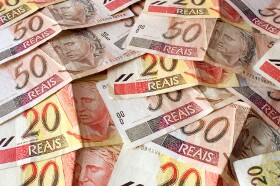The Brazilian real continues to test record lows against a myriad of G10 currencies, including the US dollar. With disappointing economic data, a decline in financial markets, and a political crisis unfolding, the real has become the worst-performing emerging market currency this year. Is more pain ahead for Brazil amid the coronavirus pandemic?
The March numbers are only now beginning to pour in, and they are not providing an optimistic view of the Latin American country. Many purchasing managersâ index (PMI) reading estimates are showing across-the-board contraction, while business and consumer confidence surveys crater below 50.
Latin American financial markets have recovered from their 2020 lows in March, but many regional stocks are still down for the year.
President Jair Bolsonaro is expecting a fierce downturn that his government has announced a multi-billion-dollar stimulus package, which includes a 70% wage subsidy. But the Bolsonaro administration might be relying more on monetary relief to shore up the economy as the Monetary Council injected $124 billion of liquidity into financial markets. This is in addition to slashing interest rates by 50 basis points to 3.75%.
Due to the latest events, observers are expecting the central bank to cut its benchmark rate by 100 basis points to 2.75% at next monthâs policy meeting. In a research note to clients, Barclays chief Brazil economist Roberto Secemski stated that a decline in inflation projections and a dovish slant in sentiment are enough to anticipate a steep rate cut in May.
Changes in (central bank) communication with the market suggest to us that the bank intends to deliver a larger cut than what was previously priced by the (rates) curve.
We now expect the Selic rate to be reduced at least 75bp on May 6, to 3.00%, not discarding a 100bp cut should financial conditions be supportive of the move.
This would be on top of the central bankâs plan to purchase government and corporate bonds, which is something lawmakers are working to allow following constitutional amendments.
The central bankâs recent year-end inflation survey forecasts a rate of 2.23%, below the institutionâs goal of 4%. The average forecast for next year has also declined from 3.75% to 3.4%.
All these developments have made the real the worst-performing emerging market currency this year, plunging more than 26% year-to-date.
The USD/BRL currency pair rose 1.76% to 5.6915, from an opening of 5.5935, at 18:48 GMT on Monday. The EUR/BRL climbed 1.81% to 6.1639, from an opening of 6.0524.
If you have any questions, comments, or opinions regarding the Brazilian Real, feel free to post them using the commentary form below.
